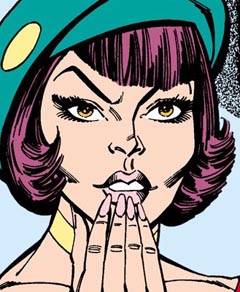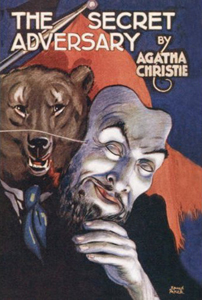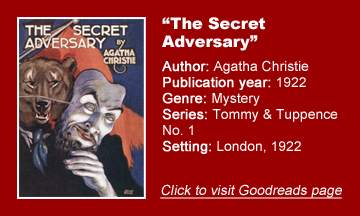Agatha Christie’s second novel, “The Secret Adversary” (1922), introduces Tommy and Tuppence, best friends since childhood who form The Young Adventurers in their early 20s. Not as prolific or lauded as Poirot (introduced in her first book, “The Mysterious Affair at Styles”), T&T nonetheless have a following, as witnessed by four additional books and two miniseries (both called “Partners in Crime,” and both featuring an adaptation of this first novel).
It’s easy to see why: They are a delightful bantering duo, with Tommy focused on facts and Tuppence being more impulsive.
YA flavor, at first
When the duo places an ad for any kind of work whatsoever in the slow post-war UK economy, I had a slight initial impression that T&T are aimed at young-adult readers. However, once they sign on with multiple parties to investigate the disappearance of young American diplomat-by-necessity Jane Finn, “The Secret Adversary” ends up being a complex novel even by Christie’s standards.
I rank it a bit lower than Christie’s elite work because the plot is slow to progress. That’s not to say it’s a boring novel. The personalities of Tommy and especially Tuppence make that impossible; it’s almost a jittery read as the first-time detectives excitedly work through and think through their case.
In an example of an author going meta long before “meta” was a term, T&T are driven in part by what they’ve learned in dime-store novels.
Playing out ‘the dance’
Also slowing down the plot (in an enjoyable way) is the question of their romantic interest toward one another. Christie engages in what modern TV writers call “the dance.” Made famous by “Moonlighting,” it’s the idea that two people who are meant to be together won’t actually get together; thus, the audience keeps tuning in.
Christie plays the dance nicely, with cute moments where we see they love each other as the character himself/herself utterly fails to convince a listener that they are merely friends. Or Tommy reacts a little too strongly to Julius’ expressed desire to marry Tuppence.
However, the dance reaches a definite resolution on the final page, perhaps because Christie couldn’t be sure she’d get to write more T&T novels. Still, I’ll be happy to read more about the couple.
Mysterious supporting cast
“The Secret Adversary” doesn’t have a ton of characters, but all of their motives and interests are mysterious – and one of them could be the titular “Mr. Brown.” While I was never bored, I admit that I was a bit lost at times. But Christie always drew me back in, partly because the supporting cast is colorful.
A standout is Julius P. Hersheimer, an American millionaire who funds T&T’s search for his cousin Jane, who had survived the 1915 sinking of the Lusitania while holding a diplomatic pouch passed to her by a man. This American diplomat (correctly) believed she would be more likely than him to survive, since women and children board the lifeboats first.

Deep into politics
The diplomatic pouch isn’t merely a maguffin. Surprisingly, Christie goes fairly deep into the politics of the time. I didn’t grasp it all, but in a nutshell, the Russian Communists are working to help the Labour Party gain power in Britain. (Russians manipulating Western politics – history repeats itself.)
So the stakes include Jane’s life, the lives of our investigators … and the potential outbreak of civil war.
Placing “Adversary” more in its time is the fact that Julius is in love with his cousin Jane – based on her photograph – and wants to marry her (to a more serious degree than his desire to wed Tuppence). Since no one in the book thinks this is odd, I assume the taboo of marrying cousins was not widespread in 1922.
It’s also interesting to note that Jane is amenable to Julius’ proposal, desiring safety and security after her seven-year ordeal.
“Adversary” boasts strong, capable women – notably Tuppence (although interestingly, she says she wants to marry into money, too). But by the same token Christie doesn’t look down upon Jane’s more traditional path of seeking a stable life via a husband.
More so than via its plotting, the mystery is propelled by mood, as our heroes regularly worry that the Mr. Brown is nearby, manipulating things. When we find out his identity, it’s satisfying, although the multiple-page explanatory segment and excerpts from Brown’s journal are crucial to tying it all together.
When reading “The Secret Adversary,” my feeling was more “I could end up liking this novel” rather than “I’m liking it as I read it.”
Every week, Sleuthing Sunday reviews an Agatha Christie book or adaptation. Click here to visit our Agatha Christie Zone.


